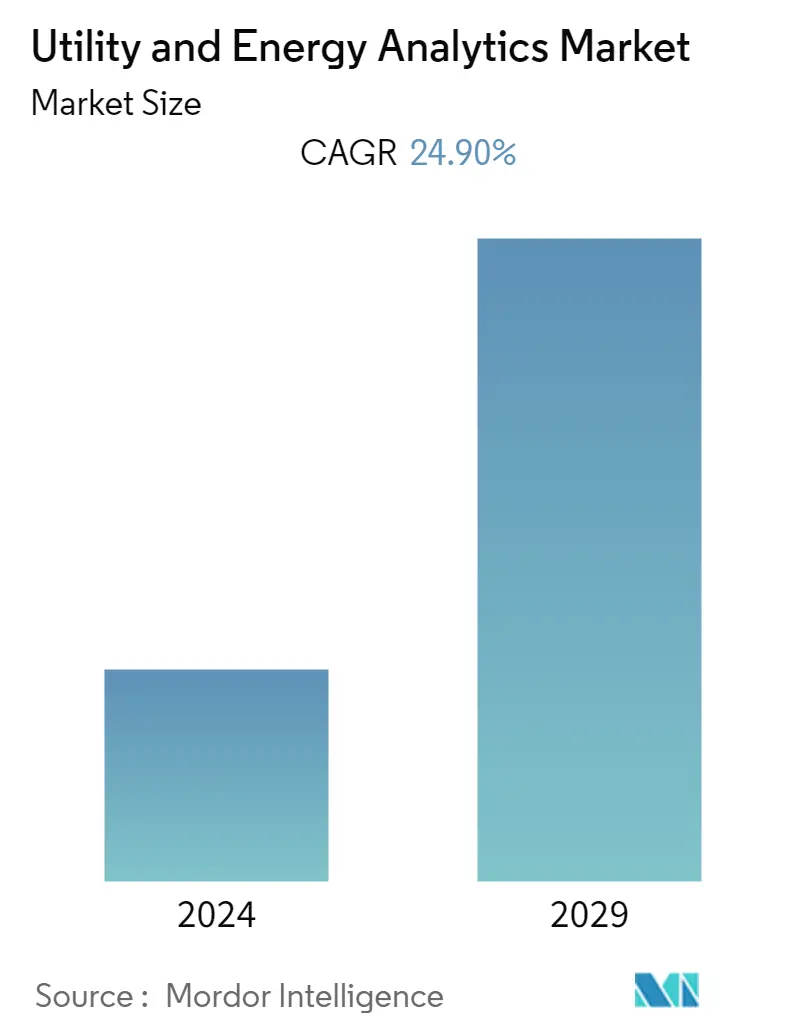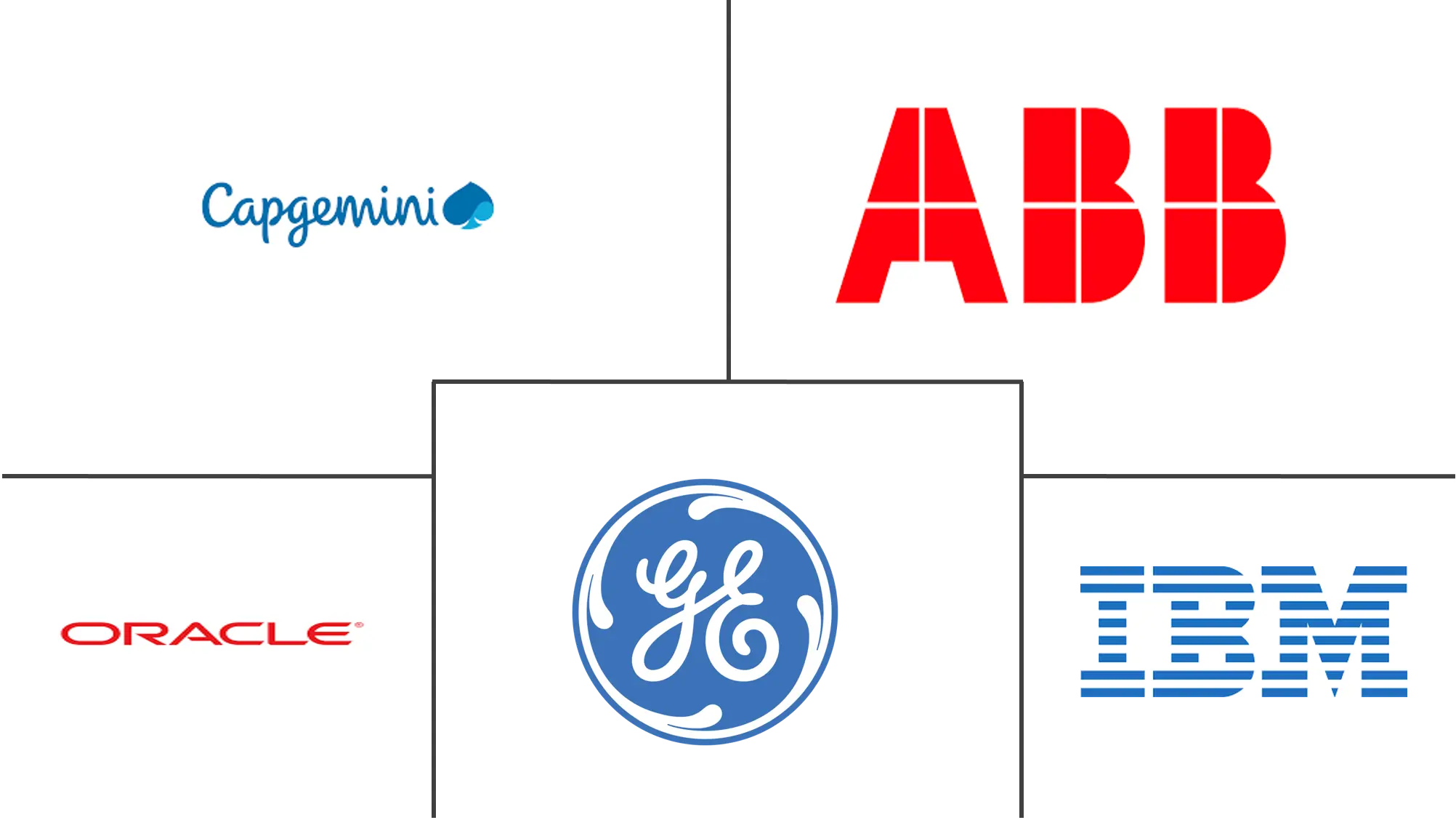Market Size of Utility and Energy Analytics Industry

| Study Period | 2019 - 2029 |
| Base Year For Estimation | 2023 |
| CAGR | 24.90 % |
| Fastest Growing Market | Asia Pacific |
| Largest Market | North America |
| Market Concentration | Medium |
Major Players
*Disclaimer: Major Players sorted in no particular order |
Need a report that reflects how COVID-19 has impacted this market and its growth?
Utility and Energy Analytics Market Analysis
The utility and energy analytics market is poised to expand at a CAGR of 24.9% over the forecast period 2022 - 2027. Energy data analytics uses statistics, artificial intelligence, and machine learning. It enables facilities to examine all energy usage across all facilities and equipment. The demand for such advanced technologies is consistently expanding. They can forecast future consumption patterns, compare consumption across facilities, and gain insight into electrical factors such as power, current, and voltage unbalance. The facilities could manage energy use efficiently and responsibly using IoT sensors and other intelligent analytics systems.
- There lies a huge untapped potential for advanced analytics tools and techniques, such as the big data platform and cloud computing. With the rise in the use of the microgrids control system and other smart grid systems, which enable businesses to monitor, control, and analyze grid functioning from a central control center, the market for utility and energy analytics will grow significantly. The need for big data analytics among utility providers is also anticipated to increase as a result of the favorable government legislation supporting smart grid solutions and the exponentially rising usage of smart meters.
- Another significant element that can profit from big data analytics is renewable energy. Technologies utilizing renewable energy are becoming more popular on a global scale, particularly as a dependable source of electricity. According to the IEA, renewable energy capacity is anticipated to grow at a rapid pace in the following five years, accounting for about 95% of the increase in global power capacity by 2026. The global renewable electricity capacity is anticipated to increase by more than 60% between 2020 and 2026, reaching more than 4 800 GW. Solar energy is expected to dominate the renewables market, generating far more electricity in the next four years than hydropower and wind.
- Energy utilities can optimize power generation and planning with analytics solutions. Analytics adoption is well encouraged by the renewable energy industry. When used in renewable energy power plants, predictive analytics can provide precise energy production forecasts. It anticipates mechanical glitches, thereby enhancing operational effectiveness. For instance, to estimate the variable resources for solar and wind power generation, IBM's hybrid renewable energy forecast technique makes use of big data, predictive analysis, and weather modeling technologies. This can provide 10% more renewable energy generation to the system, which is enough to power an additional 14,000 houses.
- Furthermore, there is a vast untapped potential for cutting-edge analytics tools and methods, like the huge information stage and distributed computing, as a result of the expansion in the use of the microgrids control network and other brilliant lattice frameworks, which enable organizations to screen, control, and examine network working from a focal control focus. The demand for extensive information analytics among utility merchants is anticipated to be driven by great government guidelines pushing savvy network arrangements and exponentially expanding reception of shrewd meters.
- Multiple governments across the world are increasingly limiting the movement of people primarily to slow down the spread of COVID-19. Due to this, the utilities and the energy sector may expect a shift in the demand for electricity. The residential consumption and demands on water infrastructure are also expected to witness an increase as people are at home for longer periods of time. The usage of analytics solutions will primarily help these companies better forecast the demand response and make accurate distribution planning.
